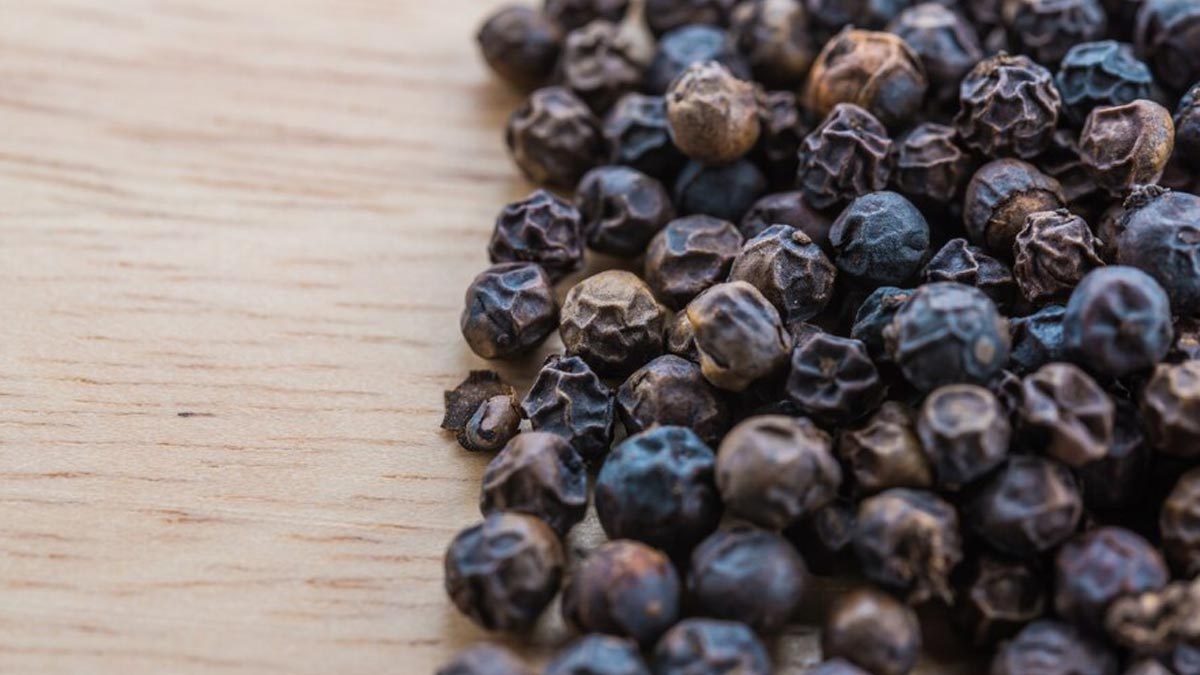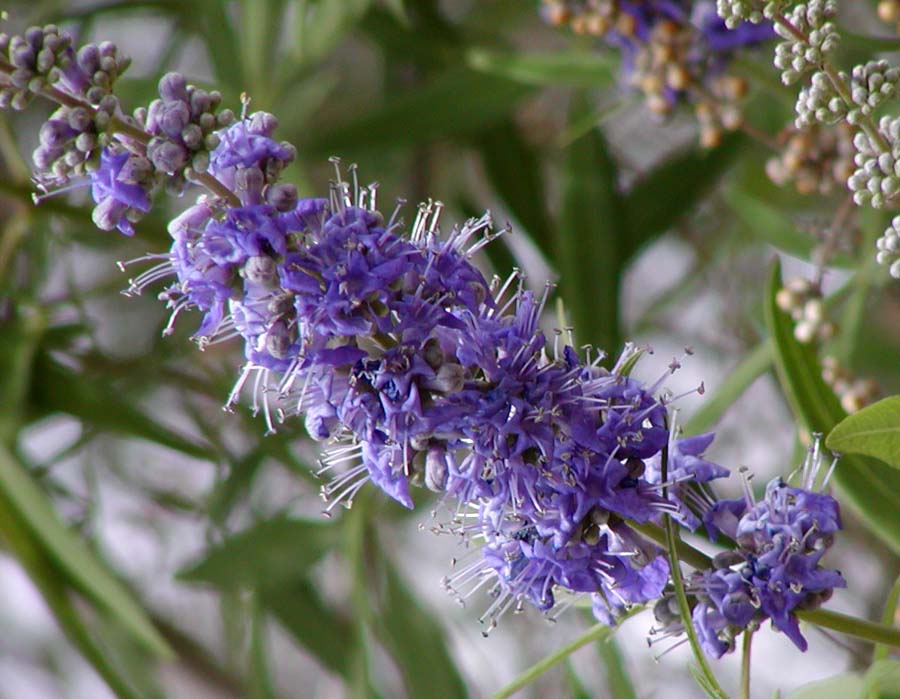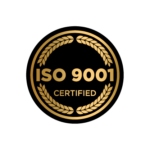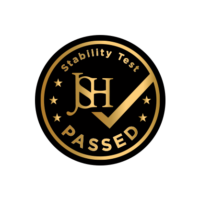Durante mais de 2.500 anos, as mulheres do antigo Egito, Grécia, Irão e Roma recorreram à mesma pequena baga para apoiar a saúde reprodutiva. Atualmente, os estudos clínicos estão a provar o que estas civilizações antigas sabiam de alguma forma: Vitex Agnus Castus pode melhorar significativamente os sintomas relacionados com as hormonas.
Num estudo recente, 93% das mulheres que tomaram Vitex relataram uma diminuição dos sintomas da TPM. Outro descobriu que as mulheres com problemas de fertilidade tinham mais do dobro da probabilidade de engravidar quando usavam esta baga em comparação com o placebo. Não se trata de alegações de marketing - são resultados de investigação publicados.
Escolhemos o Vitex Agnus Castus como ingrediente-chave na nossa nova fórmula Flourish porque as provas são convincentes, o perfil de segurança é forte e o historial fala por si.

Imagine uma árvore de folha caduca ou um arbusto grande a crescer em estado selvagem ao longo da costa mediterrânica, com os seus ramos a alcançar o sol quente. Esta é a Vitex agnus-castus no seu habitat natural - um membro da família Lamiaceae (talvez a conheça melhor como a família da hortelã) que tem prosperado na Europa Mediterrânica e na Ásia Ocidental durante milénios.
A árvore em si é bastante impressionante quando madura, mas é o pequeno fruto que detém todo o poder. Estas bagas - mais ou menos do tamanho de grãos de pimenta preta e de aspeto semelhante - desenvolvem-se depois de as flores perfumadas da árvore desaparecerem. Cada baga contém os compostos concentrados que tornaram esta planta tão apreciada em várias culturas e séculos.
O que torna esta planta particularmente interessante é a forma como se adaptou ao seu ambiente. Prosperando em climas mediterrânicos quentes e secos, desenvolveu compostos robustos para se proteger - os mesmos compostos que as civilizações antigas descobriram que podiam apoiar a saúde humana.
Atualmente, embora a árvore seja cultivada em várias partes do mundo, as bagas de maior qualidade continuam a vir da sua região mediterrânica nativa, onde a combinação de solo, clima e métodos de colheita tradicionais produz os frutos mais potentes.
A história da Vitex agnus-castus parece um mapa de antigas rotas comerciais e conhecimentos médicos. Durante mais de 2500 anos, esta baga apareceu nos textos e práticas médicas de civilizações que tinham pouco contacto umas com as outras - no entanto, de alguma forma, todas elas descobriram utilizações notavelmente semelhantes para ela.
Os antigos médicos egípcios, gregos, iranianos e romanos documentaram a utilização do fruto da árvore casta para a saúde reprodutiva das mulheres. Não se tratava de medicina popular casual - eram as autoridades médicas do seu tempo, que registavam cuidadosamente as suas observações e tratamentos. O médico grego Dioscórides escreveu sobre os seus efeitos, enquanto o naturalista romano Plínio, o Velho, comentou as suas propriedades.
O próprio nome "árvore da casta" conta uma história. Os registos históricos mostram que, na Idade Média, os monges consumiam a árvore da casta acreditando que ajudaria a diminuir o desejo sexual - daí o nome "pimenta do monge" e as referências à castidade. Independentemente de afetar ou não a libido, o nome pegou e espalhou-se pela Europa.
O que é notável é a consistência das utilizações tradicionais entre estas diferentes culturas. Dos antigos templos gregos aos lares romanos e aos mosteiros medievais, as aplicações permaneceram surpreendentemente semelhantes - centradas principalmente na saúde da mulher e no bem-estar reprodutivo.

Se avançarmos para os tempos modernos, vemos este conhecimento histórico ser validado pela investigação contemporânea. As autoridades sanitárias alemãs - conhecidas pelos seus padrões rigorosos - aprovaram oficialmente o Vitex agnus-castus para irregularidades do ciclo menstrual, queixas pré-menstruais e dores mamárias. Isto representa milhares de anos de conhecimento tradicional que finalmente se encontram com o escrutínio científico moderno.
Esta convergência entre a sabedoria antiga e a investigação moderna levanta uma questão importante: o que é que todas estas civilizações observaram exatamente que tornou esta baga tão universalmente apreciada?
Quando escolhemos a Vitex Agnus Castus para o Flourish, não nos baseámos no folclore ou em desejos. Estávamos a olhar para décadas de investigação clínica rigorosa que mostra consistentemente que esta baga pode fazer uma diferença real na vida das mulheres.
Os estudos sobre a TPM são convincentes
As provas mais sólidas provêm de múltiplos ensaios aleatórios, em dupla ocultação e controlados por placebo - o padrão de ouro da investigação médica. No estudo BMJ de Schellenberg, 2001, 170 mulheres com TPM tomaram extrato de Vitex (Ze 440, 20 mg por dia) ou placebo durante três ciclos. Os resultados foram impressionantes: 52% das mulheres do grupo Vitex registaram uma melhoria significativa em comparação com apenas 24% do grupo placebo.
Este não foi um resultado isolado. Um grande estudo multicêntrico efectuado por Loch et al., 2000, seguiu 1634 mulheres que tomaram Vitex durante três ciclos, tendo 93% relatado uma diminuição dos sintomas da TPM, incluindo alterações de humor, irritabilidade e sensibilidade mamária. A consistência entre diferentes populações e desenhos de estudo dá-nos confiança nestes resultados.
Equilíbrio hormonal - Medido, não adivinhado
O que distingue a melhor investigação sobre Vitex é que os investigadores não se limitaram a perguntar às mulheres como se sentiam - mediram os níveis hormonais reais. Estudos que examinaram especificamente mulheres com hiperprolactinemia latente descobriram que o Vitex podia normalizar os níveis de prolactina enquanto apoiava a produção de progesterona (Milewicz et al., 1993).
A investigação sobre a dose-resposta efectuada por Schellenberg et al., 2012, revelou algo crucial: O Vitex actua de forma diferente com doses diferentes. Doses mais baixas (cerca de 20 mg por dia) mostraram consistentemente o melhor equilíbrio entre eficácia e tolerabilidade. Este efeito dependente da dose explica porque é que a normalização é tão importante.
Alívio da dor que é mensurável
No caso das dores mamárias cíclicas, vários ensaios controlados mostram que o Vitex é consistentemente melhor do que o placebo. Estudos que utilizaram escalas visuais analógicas - onde as mulheres avaliam a sua dor de forma objetiva - encontraram reduções significativas na dor mamária quando utilizaram extractos padronizados de Vitex (Halaska et al., 1999).
O perfil de segurança é tranquilizador
Em todos os estudos principais, os dados de segurança são notavelmente consistentes. Na maior avaliação de segurança que envolveu mais de 800 mulheres, os investigadores descobriram que ocorreram acontecimentos adversos em apenas 6,5% das utilizadoras de Vitex, em comparação com 5,5% das utilizadoras de placebo - essencialmente nenhuma diferença. Os efeitos secundários mais comuns foram um ligeiro desconforto gastrointestinal ou dores de cabeça, e não foram registados quaisquer efeitos adversos graves.
Porque é que a normalização é importante
A investigação mostra consistentemente que os extractos normalizados - particularmente a formulação Ze 440 utilizada na maioria dos ensaios clínicos - produzem resultados fiáveis. Este extrato é normalizado para níveis específicos de compostos activos como a casticina, assegurando que cada dose fornece uma potência consistente.
Não se trata de alegações de marketing ou testemunhos - são resultados de investigação revistos por pares e publicados em revistas médicas respeitadas. Este é exatamente o tipo de fundamento baseado em provas que queríamos para cada ingrediente do Flourish.
Durante séculos, observou-se que Vitex agnus-castus parecia ajudar nos problemas hormonais, mas não se sabia porquê. Atualmente, os investigadores identificaram os mecanismos específicos que tornam esta baga tão eficaz.
A chave está na forma como o Vitex interage com a glândula pituitária - uma estrutura pequena mas poderosa na base do cérebro que actua como o centro de controlo hormonal do corpo. A investigação sugere que os constituintes do vitex podem influenciar os receptores de dopamina-2 da pituitária anterior. Isto pode levar a uma redução da libertação de prolactina e da hormona folículo-estimulante (FSH) e a um aumento da hormona luteinizante (LH). Esta mudança pode melhorar o desenvolvimento do corpo lúteo e apoiar um equilíbrio mais saudável entre os níveis de estrogénio e progesterona.
O que torna isto particularmente fascinante é que o Vitex não contém hormonas em si - funciona influenciando a produção de hormonas do seu próprio corpo. A baga actua como um regulador natural, ajudando a afinar os seus sistemas hormonais existentes em vez de adicionar hormonas externas.
Os efeitos são dependentes da dose, o que explica alguns dos resultados variáveis dos estudos. Doses baixas de extrato resultaram na diminuição dos níveis de estrogénio e no aumento dos níveis de progesterona e prolactina, possivelmente causados por uma inibição da libertação da hormona folículo-estimulante (FSH) e pela estimulação dos níveis da hormona luteinizante (LH). No entanto, em alguns estudos com pessoas que receberam doses mais elevadas, os níveis de FSH e LH permaneceram inalterados, enquanto a libertação de prolactina diminuiu. É por isso que a dosagem correta é tão importante.
Vários ensaios aleatórios controlados documentaram estes efeitos. Em estudos que mediram especificamente as alterações hormonais, os investigadores descobriram consistentemente que Vitex reduz os níveis de prolactina enquanto apoia a produção de progesterona. Vários estudos com mulheres que tinham hiperprolactinemia latente mostraram que Vitex podia normalizar os níveis de prolactina e restaurar a função adequada da fase lútea.
A baga da árvore casta contém uma série de constituintes activos: flavonóides (ou seja, casticina, kaempferol, orientina, quercetagetina e isovitexina), glicosídeos iridóides (ou seja, agnusida e aucubina) e óleos essenciais (ou seja, limoneno, cineol, pineno e sabineno). Estes compostos parecem funcionar em conjunto de forma sinérgica, o que pode explicar por que razão os extractos de bagas inteiras apresentam frequentemente melhores resultados do que os compostos isolados nos estudos.
A investigação revelou igualmente que o Vitex possui propriedades opioidérgicas e dopaminérgicas in vitro. Os efeitos opioidérgicos podem ajudar a explicar por que razão é particularmente eficaz para os sintomas da TPM, como as alterações de humor e o desconforto físico, ao passo que a atividade dopaminérgica poderia explicar as melhorias de humor que muitas mulheres relatam.
A investigação mais robusta centrou-se nos extractos normalizados, particularmente na formulação Ze 440 utilizada em vários ensaios clínicos. Estes estudos mostram consistentemente que, quando devidamente normalizado e doseado, o Vitex pode produzir alterações mensuráveis nos níveis hormonais que se correlacionam com a melhoria dos sintomas.
Esta sólida base científica ajuda a explicar os benefícios reais que tanto os antigos utilizadores como os modernos participantes em investigações têm experimentado.

Esqueça os nomes complicados das hormonas e o jargão da investigação por um minuto. Aqui está o que tomar Vitex pode realmente sentir no seu dia a dia.
A semana do período não vai dominar a sua vida
Em vez de temer a semana que antecede o período, pode realmente sentir-se humana. Aquela irritabilidade esmagadora em que a respiração do seu parceiro a deixa louca? Muitas vezes, torna-se um ruído de fundo controlável em vez de uma tortura que provoca raiva. É provável que continue a ter alguns sintomas da TPM, mas não vai sentir que estão a sequestrar toda a sua personalidade.
Muitas mulheres descrevem-no como sentir-se "mais eu própria" ao longo do seu ciclo. As mudanças de humor que costumavam fazê-la sentir-se louca tornam-se ondas mais pequenas em vez de tsunamis.
Os seus seios não vão doer ao toque
Se está habituada a cruzar os braços de forma protetora antes do período ou a estremecer quando alguém a abraça, Vitex pode dar-lhe algum alívio. Essa sensação de ternura e inchaço que torna desconfortável até o seu sutiã mais macio, muitas vezes melhora significativamente. Poderá ser capaz de descer escadas sem segurar o peito.
O sono torna-se mais previsível
Quando as suas hormonas estão mais equilibradas, o sono melhora frequentemente. Em vez de ficar acordada com a mente acelerada na semana anterior à menstruação, pode até adormecer normalmente. E quando dorme melhor, tudo o resto parece mais controlável - a sua energia, o seu humor, a sua capacidade de lidar com o stress diário.
A sua energia está nivelada
Aquele cansaço esmagador que se sente antes do período - em que é preciso dormir uma sesta só para chegar ao almoço - torna-se muitas vezes menos intenso. Pode ainda sentir-se um pouco cansada, mas não como se tivesse sido atropelada por um camião.
A realidade da linha do tempo
Eis a verdade: isto não acontece de um dia para o outro. A maioria das mulheres precisa de 2-3 ciclos completos antes de notar mudanças reais. Algumas sentem melhorias subtis após um ciclo, mas os benefícios significativos aumentam com o tempo. Pense nisto como se o seu corpo estivesse a aprender lentamente um novo ritmo, e não a ligar um interrutor.
O que o Vitex não pode resolver
Vamos ser claros - Vitex não é mágico. Não vai curar a depressão grave, corrigir distúrbios hormonais graves como a SOP, ou tornar o seu período completamente indolor. Não vai transformá-la numa pessoa diferente ou resolver problemas de relacionamento que não têm nada a ver com hormonas.
A maioria das mulheres que beneficiam do Vitex descrevem-no como uma sensação mais "normal" - como se os seus sintomas deixassem de ser a personagem principal da história da sua vida e passassem a ser apenas ruído de fundo. É provável que continue a ter sintomas de TPM, mas estes podem ser controláveis em vez de perturbarem a sua vida.
Se é uma pessoa que sente que as suas hormonas estão a controlar a sua vida, Vitex pode ajudá-la a sentir que está de volta ao lugar do condutor.


Copyright 2024 © Mountaindrop. Todos os direitos reservados. Desenvolvido por EOSNET









